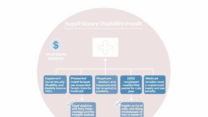
Common Issues with Government Grants and How to Avoid Them
Accounting Risks and Financial Reporting Issues

When it comes to government grants, one of the most overlooked areas is accounting and financial reporting. These grants often come with strict compliance requirements, and failure to meet them can lead to penalties, repayment demands, or even disqualification from future funding opportunities.
A common issue is misclassifying grant funds in financial statements. For example, some organizations mistakenly record grant income before it is earned, violating revenue recognition principles under Generally Accepted Accounting Principles (GAAP). This can lead to inaccurate financial reporting and audit findings.
Another risk involves inadequate documentation. Government grants typically require detailed records of how funds are spent. If your organization cannot provide clear, timely, and accurate documentation, it may face compliance issues during audits or monitoring visits.
Additionally, internal control weaknesses can increase the risk of misuse or mismanagement of grant funds. Organizations should implement strong financial controls, such as segregation of duties, regular reconciliations, and oversight by qualified personnel.
To avoid these issues:
– Ensure your accounting team is well-versed in GAAP and the specific requirements of each grant.
– Use accounting software that can track restricted funds separately.
– Maintain detailed records of all expenditures related to the grant.
– Conduct internal audits regularly to identify and correct potential issues early.
Staying compliant not only protects your organization from penalties but also builds trust with funders and increases your chances of receiving future grants.
For more guidance, the U.S. Government Accountability Office (GAO) provides resources on federal grant compliance: https://www.gao.gov/
Structural and Economic Inefficiencies of Subsidies

Government grants and subsidies are powerful tools for stimulating economic growth, supporting innovation, and promoting social welfare. However, when not designed or implemented properly, they can lead to structural and economic inefficiencies that hinder their intended benefits.
One of the most common inefficiencies is market distortion. Subsidies can artificially lower the cost of goods or services, leading to overproduction or overconsumption. For example, agricultural subsidies in the U.S. have sometimes encouraged the overproduction of certain crops, which can lead to environmental degradation and waste.
Another issue is the misallocation of resources. When subsidies are not targeted effectively, they may benefit industries or companies that are not the most efficient or innovative. This can stifle competition and slow down economic progress. For instance, subsidies for fossil fuels can delay the transition to renewable energy by making traditional energy sources artificially cheap.
Administrative inefficiencies also pose a problem. Complex application processes, lack of transparency, and inconsistent evaluation criteria can lead to delays, fraud, or misuse of funds. These inefficiencies reduce the overall impact of government spending and erode public trust.
To avoid these pitfalls, policymakers and grant recipients should focus on:
– Clear and measurable objectives for subsidies
– Regular performance evaluations and audits
– Transparent selection and reporting processes
– Phasing out subsidies that no longer serve their purpose
For a deeper look into the economic effects of subsidies, the Congressional Budget Office (CBO) provides detailed reports and analysis: https://www.cbo.gov
By understanding and addressing these structural and economic inefficiencies, we can ensure that government grants and subsidies truly serve the public good and contribute to a more sustainable and equitable economy.
Mismanagement, Fraud, and Audit Vulnerabilities

Government grants can be a powerful tool for nonprofits, small businesses, and research institutions across the U.S. However, many recipients unknowingly fall into common pitfalls such as mismanagement, fraud, and audit vulnerabilities. Understanding these risks is essential to ensure compliance, maintain funding, and protect your organization’s reputation.
Mismanagement often stems from a lack of internal controls or inadequate training. This can lead to improper use of funds, missed deadlines, or failure to meet grant objectives. To avoid this, organizations should implement clear financial policies, designate a grant manager, and use reliable grant management software.
Fraud, whether intentional or due to negligence, is a serious concern. It includes falsifying documents, inflating expenses, or using funds for unauthorized purposes. To prevent fraud, regular internal audits, staff training, and whistleblower policies are crucial. Encouraging transparency and accountability can significantly reduce the risk.
Audit vulnerabilities arise when documentation is incomplete or inconsistent. Federal grants are subject to strict audit requirements under the Uniform Guidance (2 CFR Part 200). To stay audit-ready, maintain organized records, track all expenditures, and ensure timely reporting. The U.S. Government Accountability Office (GAO) provides helpful resources on audit standards: https://www.gao.gov/yellowbook
By proactively addressing these issues, grant recipients can ensure compliance, build trust with funders, and make the most of their awarded funds. A well-managed grant not only supports your mission but also opens doors to future funding opportunities.
Best Practices for Transparency and Compliance

Navigating government grants can be a fantastic opportunity for organizations, but it also comes with strict requirements for transparency and compliance. To avoid common pitfalls and ensure your grant remains in good standing, it’s essential to follow best practices that align with federal guidelines.
First, always maintain accurate and up-to-date records. This includes financial documentation, program reports, and any correspondence with the granting agency. Keeping a digital trail not only helps with audits but also improves internal accountability.
Second, understand the specific compliance requirements of your grant. Each federal grant may have different reporting timelines, allowable costs, and performance metrics. Familiarize yourself with the terms and conditions outlined in the Notice of Award (NOA) and the Code of Federal Regulations (CFR), particularly 2 CFR Part 200, which governs Uniform Administrative Requirements, Cost Principles, and Audit Requirements for Federal Awards. You can find more information on this at the official Grants.gov site: https://www.grants.gov/learn-grants/grant-policies.html
Third, establish internal controls and assign clear responsibilities. Designate a compliance officer or grant manager who is responsible for monitoring activities, preparing reports, and ensuring that all spending aligns with the grant’s purpose. Regular internal audits can also help catch issues early.
Lastly, foster a culture of transparency within your organization. Encourage team members to report concerns, ask questions, and participate in compliance training. This proactive approach reduces the risk of mismanagement and builds trust with funders.
By following these best practices, you not only reduce the risk of non-compliance but also position your organization for future funding opportunities. Transparency and accountability are not just regulatory requirements—they are keys to long-term success.







